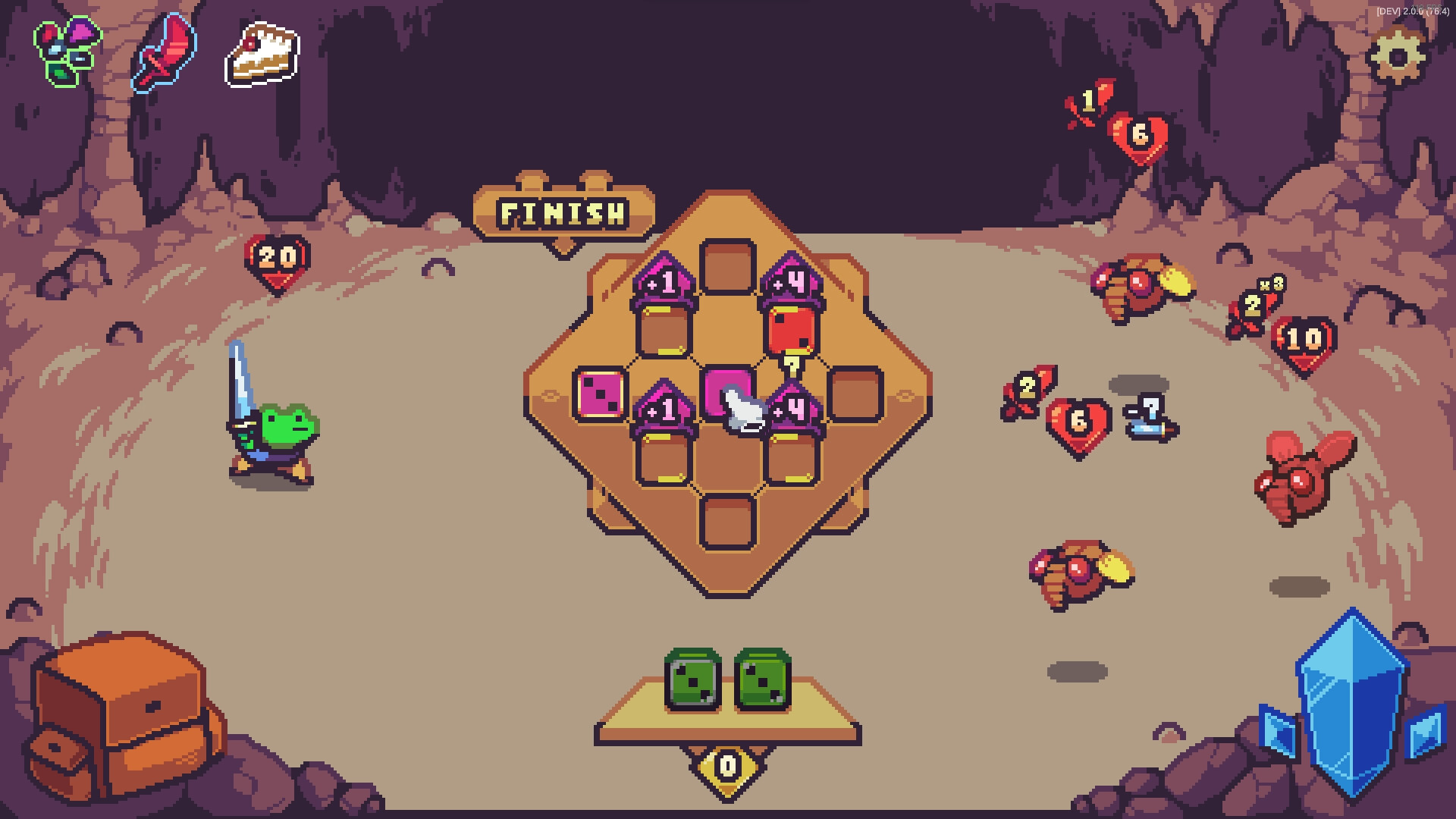
You draw dice like cards and slot them into spaces on a board to determine your actions for the turn. Place a two-roll red die, for example, and you’ll deal two damage to whatever enemy you’re targeting. A one-roll green die will heal you for one, a three-roll blue die will give you a shield that can absorb three damage this turn, and so on. Each die will roll a new value each time you draw it, with silver and gold die guaranteed to roll higher numbers based on their available faces.
The secret sauce is how you combine dice on the board and how keywords change the properties of those dice. Heavy dice stay on the board and lose value every turn, while flash dice activate the second you place them, letting you pre-prepare actions for the rest of your turn.
Purple boost dice will increase the rolls of dice placed in other slots, and you can also collect relics that buff certain positions. There are different board shapes, too, and this has a big impact on how you position your dice to get maximum value. Healing dice, for instance, can only be used once per battle, so you might want to save them until you can boost them effectively.
In under an hour, I’ve already encountered so many interesting decisions while drafting game-changing relics, choosing the right dice to clear the roll requirements in between-battle events, and shrinking my ‘deck’ to improve consistency. I cannot say this loudly enough: this feels exactly like playing Slay the Spire, one of the best roguelikes ever made. I won’t know until the full release whether it can sustain this rush of arithmetic strategy, but Die In the Dungeon feels like something really special.
Here are our picks for the best games of the year 2023.
Source: gamesradar.com


